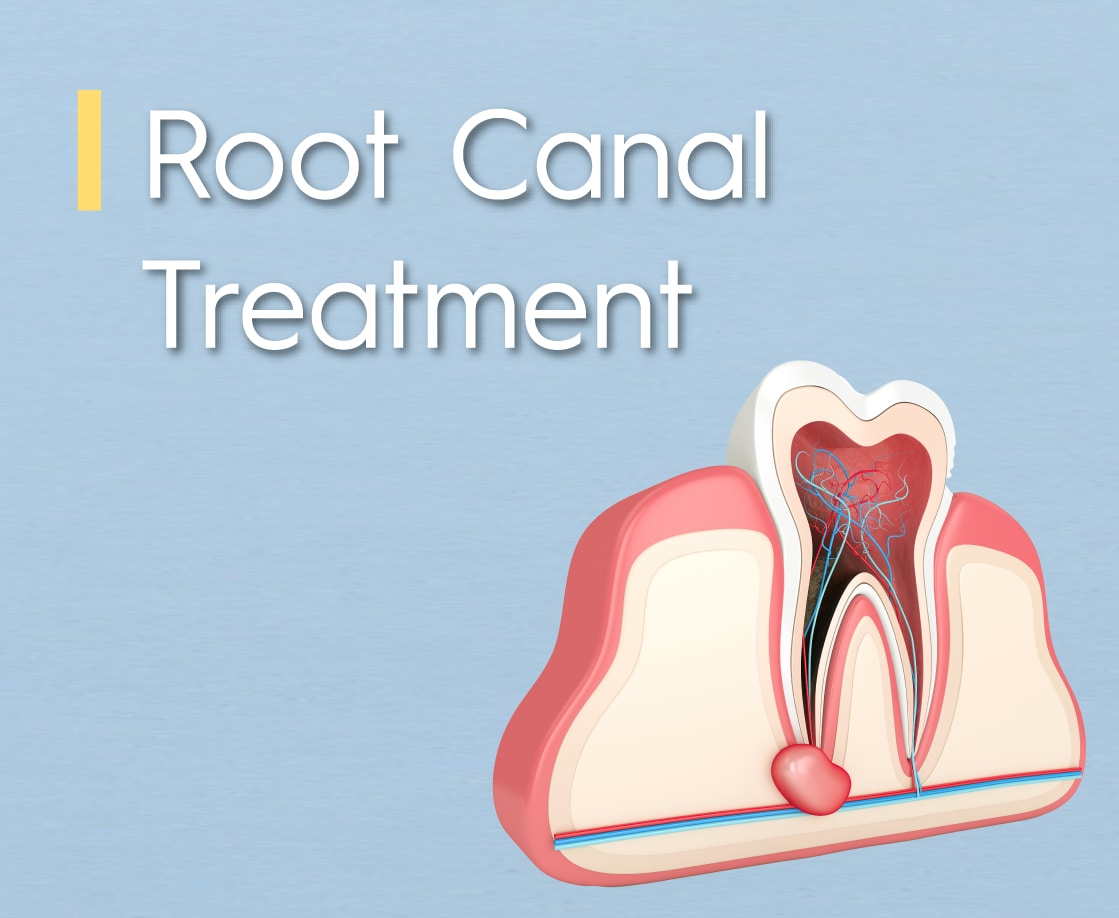

Root canal treatment | endodontic (pulp) treatment
Root canal treatmentor endodontic treatment or pulp treatment usually involves the partial or total removal of the inflamed or non-vital pulp tissues which are replaced with fillings that seal off the root canal. The purpose of this procedure is to prevent tooth loss as a result of tissue damage by removing bacteria from the pulp cavity and preventing the spread of pulp infection.

What is the pulp?
The pulp is the mid-cavity part of the tooth that is covered by dentine. It is filled with blood vessels, nerve and connective tissues that connect the dentine to supply nutrients to the tooth to keep it alive. However, when the bacteria infect the tooth all the way down to the pulp cavity, it can cause inflammation of the pulp nerve, and lead to severe pain, pulpal necrosis, abscesses and other problems to the patient.
Endodontic Treatment
In general, root canal treatment can be applied to (i) deciduous teeth that have vital pulp tissues and (ii) deciduous teeth or permanent teeth with non-vital pulp tissues. As the procedure requires deep penetration into the pulp cavity, the patient is given a local anaesthetic and the tissues inside the pulp chamber are removed using instruments. In the first case, the dentist will rinse and clean the pulp chamber, place the appropriate medication in the pulp chamber and fill the pulp cavity. In the second case, the dentist will remove the pulp tissues in the pulp chamber and the decayed part outside the pulp cavity on which an opening is made. Then, the dentist can proceed to enlarge the root canal and clean with medication, remove the tissues inside the root canals, eradicate necrotic tissues in the pulp cavity and disinfect it thoroughly. The pulp cavity becomes hollow due to the removal of necrotic tissues. The space will be filled and sealed completely with dental fillings.
Points to note on pulp treatment:

- If the tooth structure is too weak after treatment, extra protection is needed by putting on a crown
- See the dentist immediately if the temporary filling material has fallen off, in order to prevent bacteria in the saliva from entering the pulp cavity
- Due to the local anaesthetic received during treatment, do not bite your lips or tongue before the numbness has completely worn off
- Patients usually experience some degree of discomfort/pain after treatment. These are typical symptoms that will subside after a day or two. If the condition persists, see your dentist immediately



 Clinic Location
Clinic Location



